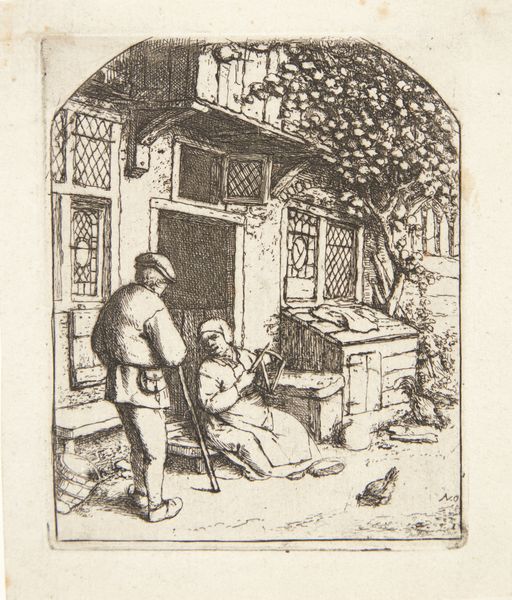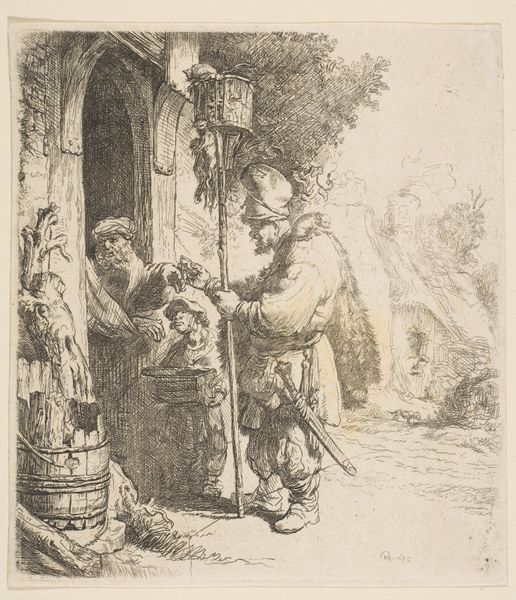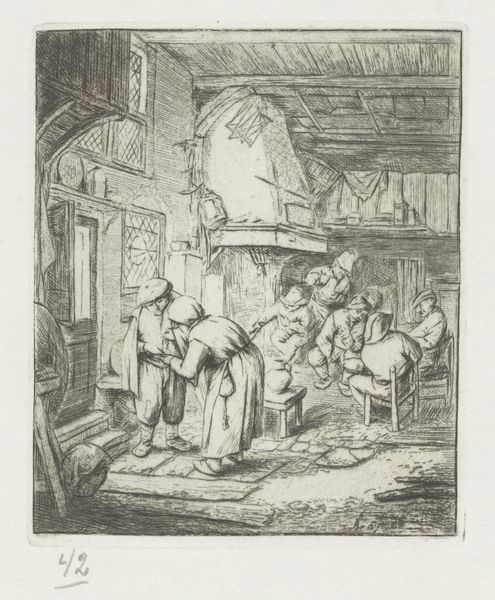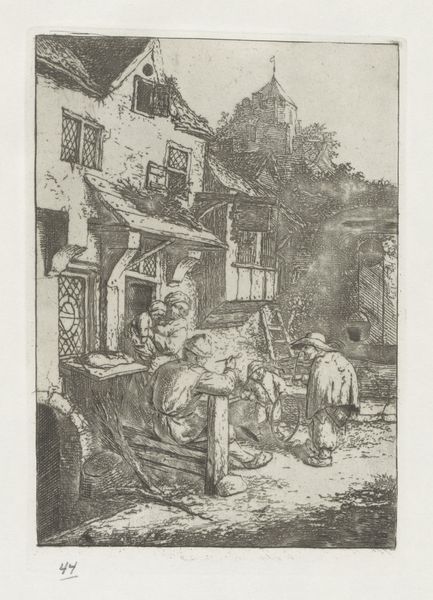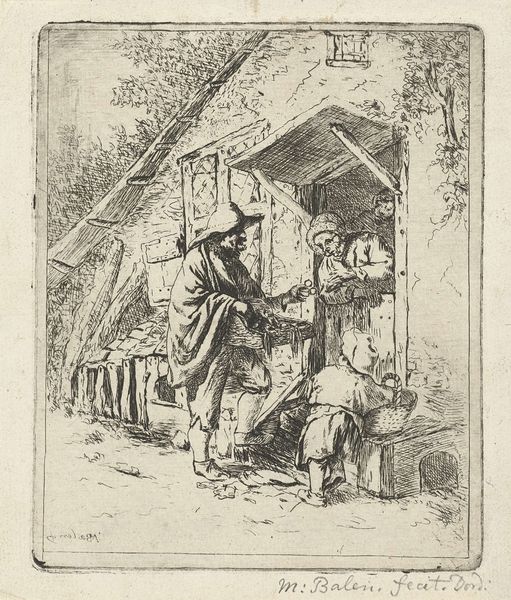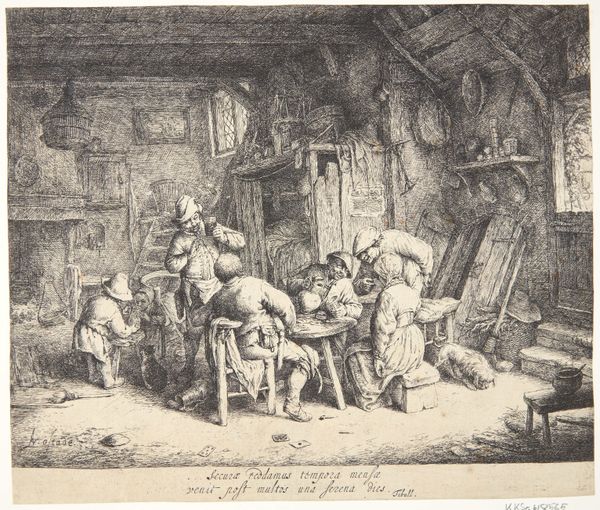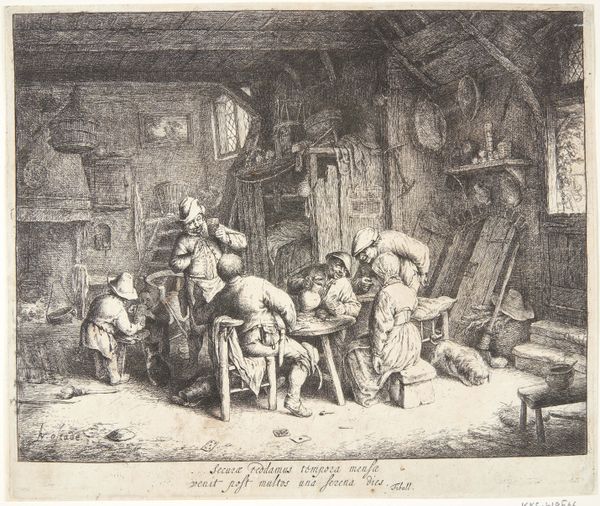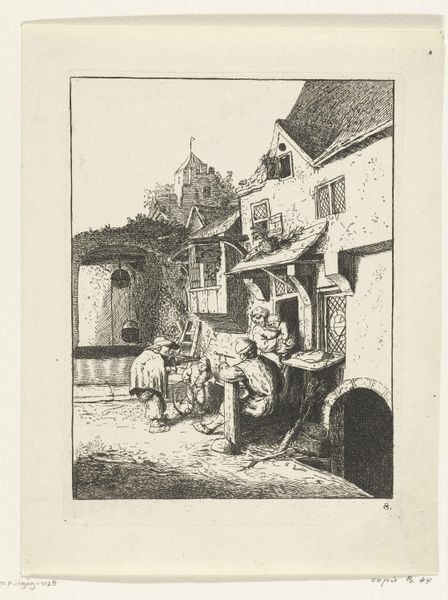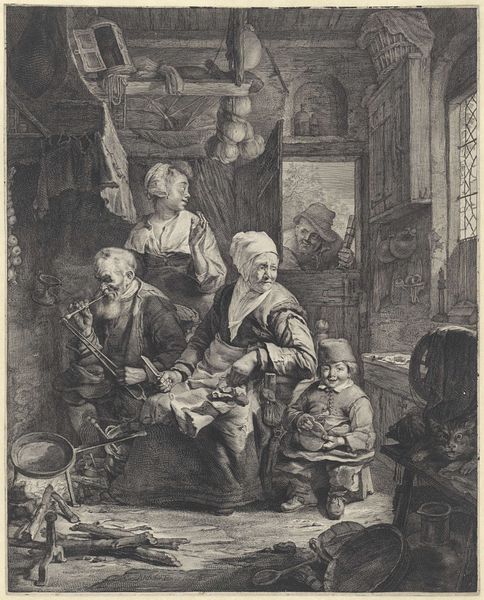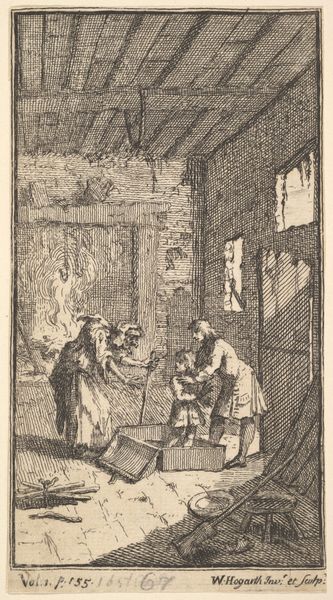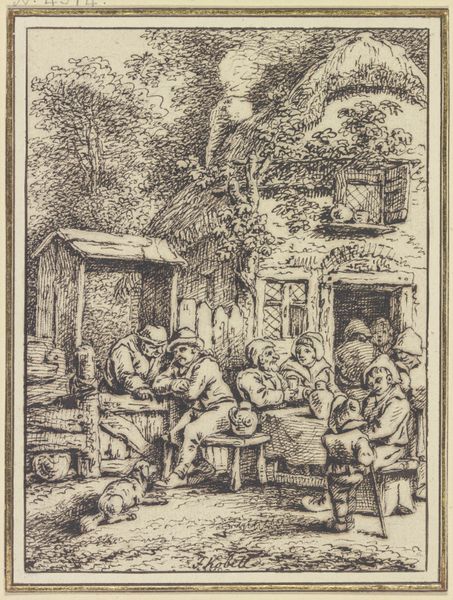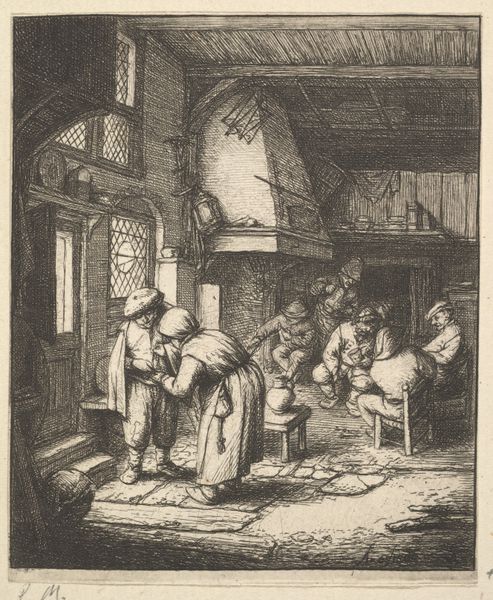
drawing, print, etching
#
drawing
#
dutch-golden-age
# print
#
etching
#
genre-painting
Dimensions: Sheet: 6 5/16 × 4 5/16 in. (16.1 × 10.9 cm)
Copyright: Public Domain
Editor: Here we have Adriaen van Ostade's "The Humpbacked Violinist," created sometime between 1610 and 1685. It's an etching, a kind of print, and looking at it, I'm immediately drawn to the everyday-ness of the scene. How might a historian interpret a slice of life like this one? Curator: It's tempting to see it as a quaint genre scene, but etchings like this served a vital social function. Ostade captured these images of peasants during a time when the Dutch Republic experienced a rising middle class and increasing urbanization. He offered a glimpse into rural life, even a romanticized version, for urban dwellers. Editor: Romanticized? Curator: Yes. Consider who bought these prints. Wealthy city dwellers collected them. The figures often become objects of amusement rather than real people facing hardship. The composition contributes: notice how carefully Ostade arranged the figures and buildings, almost like a stage set. Does that perspective change how you view the violinist? Editor: I see what you mean. It does feel a little less like a candid moment and more like a constructed image now, meant for an audience. Is it like a controlled, politically safe, version of real life? Curator: Exactly. And note the prominence given to labor: spinning, instrument-making and performance. Prints like these are part of a broader discussion on labor and class relations in the Dutch Golden Age. Ultimately, “The Humpbacked Violinist” offers an image of community that elides economic hardship or class tensions for a paying consumer. Editor: I never considered how the market shaped even seemingly "realistic" depictions of everyday life back then. It makes you wonder what social commentary is genuinely represented in the artwork and how the economic context can dilute it.
Comments
No comments
Be the first to comment and join the conversation on the ultimate creative platform.

